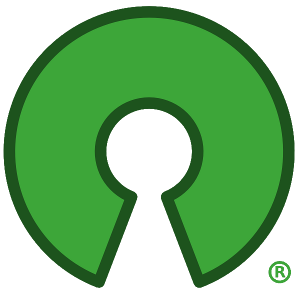I’m curious about
- editing on desktop
- editing on mobile
- whether or not you need to self host it
I know it will get downvoted to oblivion but the OP asked so whatever. I only use a simple txt or html text/notes editor sometimes (on both mobile and desktop). Other than that I use paper or don’t make notes at all. When I need to back them up or access them on another device, I just use a USB cable because Bluetooth doesn’t work on my machine for some reason
I mean… why would people downvote you for that?
I have a todo.txt which I update. If I need to “be mobile” I just stuff some notes into Signal note to myself.
During meetings, I still take notes with paper and pen, because that’s much faster than digital notes.I think it’s also worth pointing out the social factor in pen/paper notes as well—jotting things down on a notepad seems a lot more attentive than typing into your phone.
I used todo.txt in this way for years, but unfortunately it’s a dead format/spec, maintainers are all gone.
Yeah seriously I can’t believe you have the nerve to waltz into this thread and just plop a stinky plain txt turd into our nice punchbowl of needlessly overcomplicated organizational systems and tooling.
/s
Also I talked about SyncThing elsewhere on the thread in my annoyingly long comment so I won’t repeat it all, but you will never sync or transfer files between computers & phones any other way than Syncthing once you see the light I promise (I mean unless you are regularly moving 100s of gigs lol). Syncthing is slick as fuck and it just does what it does no bullshit. The web browser UI has a damn QR code reader utility so if your computer/phone has an attached camera you don’t even have to text/email a long key or manually type it out.
I will never use a non self-hosted notes service. I think it’s ridiculous. You can never fully trust such a system and it’s unnecessary power usage (DNS, all the middlemen, the server, its office etc). You can encrypt the files before sending them to a third party service but ehh that’s additional steps and good luck recovering the files in case you lose the key. And I don’t really have quite the amount of money, time and neural cells for a home server so I prefer my way. No offends against syncing though. It has its advantages but ONLY if it’s self-hosted. And tbh I’m just too old school for your unnecessarily overcomplicated syncing stuff. Analog items ftw.
I will never use a non self-hosted notes service. I think it’s ridiculous. You can never fully trust such a system and it’s unnecessary power usage (DNS, all the middlemen, the server, its office etc).
quoted from https://syncthing.net/
Private & Secure
Private. None of your data is ever stored anywhere else other than on your computers. There is no central server that might be compromised, legally or illegally.
Encrypted. All communication is secured using TLS. The encryption used includes perfect forward secrecy to prevent any eavesdropper from ever gaining access to your data.
Authenticated. Every device is identified by a strong cryptographic certificate. Only devices you have explicitly allowed can connect to your other devices.
If you have a security concern, please see the security page for details and contact information.
Open
Open Protocol. The protocol is a documented specification — no hidden magic.
Open Source. All source code is available on GitHub — what you see is what you get, there is no hidden funny business.
Open Development. Any bugs found are immediately visible for anyone to browse — no hidden flaws.
Open Discourse. Development and usage is always open for discussion.
Easy to Use
Powerful. Synchronize as many folders as you need with different people or just between your own devices.
Portable. Configure and monitor Syncthing via a responsive and powerful interface accessible via your browser. Works on macOS, Windows, Linux, FreeBSD, Solaris, OpenBSD, and many others. Run it on your desktop computers and synchronize them with your server for backup.
Simple. Syncthing doesn’t need IP addresses or advanced configuration: it just works, over LAN and over the Internet. Every machine is identified by an ID. Give your ID to your friends, share a folder and watch: UPnP will do if you don’t want to port forward or you don’t know how.
Listen it’s just my personal position that I want to OWN my notes completely and without exceptions. And about the security:
-
Are there any independent studies on the forward secrecy?
-
If 1 is false, how about bad actor attacks? Yes I know they can hack your home server but hey you can make it LAN only right?
EDIT: Imagine downvoting personal preferences
quoted from here https://docs.syncthing.net/users/security.html
Security Principles
Security is one of the primary project goals. This means that it should not be possible for an attacker to join a cluster uninvited, and it should not be possible to extract private information from intercepted traffic. Currently this is implemented as follows.
All device to device traffic is protected by TLS. To prevent uninvited devices from joining a cluster, the certificate fingerprint of each device is compared to a preset list of acceptable devices at connection establishment. The fingerprint is computed as the SHA-256 hash of the certificate and displayed in a human-friendly encoding, called Device ID…
Relay Connections
When relaying is enabled, Syncthing will look up the pool of public relays and establish a connection to one of them (the best, based on an internal heuristic). The selected relay server will learn the connecting device’s device ID. Relay servers can be run by anyone in the general public. Relaying defaults to on. Syncthing can be configured to disable relaying, or only use specific relays.
If a relay connections is required between two devices, the relay will learn the other device’s device ID as well.
Any data exchanged between the two devices is encrypted as usual and not subject to inspection by the relay.
Web GUI
If the web GUI is accessible, it exposes the device as running Syncthing. The web GUI defaults to being reachable from the local host only.
In Short
Parties doing surveillance on your network (whether that be corporate IT, the NSA or someone else) will be able to see that you use Syncthing, and your device IDs are OK to share anyway, but the actual transmitted data is protected as well as we can. Knowing your device ID can expose your IP address, using global discovery.
Protecting your Syncthing keys and identity
Anyone who can access the Syncthing TLS keys and config file on your device can impersonate your device, connect to your peers, and then have access to your synced files. Here are some general principles to protect your files:
If a device of yours is lost, make sure to revoke its access from your other devices.
If you’re syncing confidential data on an encrypted disk to guard against device theft, put the Syncthing config folder on the same encrypted disk to avoid leaking keys and metadata. Or, use whole disk encryption.
^ quoted from here https://docs.syncthing.net/users/security.html
I don’t know of any particular security audits off the top of my head, but I know of a lot of very intelligent computer people who think Syncthing is reasonably trustable (as far as you can trust computers…).
Yes I know they can hack your home server but hey you can make it LAN only right?
Yes, Syncthing does not require internet just a local network, you can build a cabin in the middle of Alaska with no reception of any kind, hook up a solar panel, plug in a router, connect computers and phones with Syncthing software on them and BOOM you are in business. The devices will likely just show up as nearby device_ids that you can just click on in the web gui interface. It is enragingly simple given how obtuse, incompatible or insecure most other alternatives are.
-
Syncthing is entirely self-hosted and end to end encrypted. Data only lives on your machines.
As I said in one of the replies, I do not have the money, time and neural cells for my own server
I agree, if it works for you - good for you! Also, thank you for sharing, nevertheless it is interesting to read about different approaches.
That’s your prefered way of doing things, I dunno why someone would downvote :/ except for the lulz…
As long as it works for you, it’s only a win situation !!
Didn’t expect to see a non-toxic person on Lemmy so fast. Get my upvote and have a very good day
I can do better than that by using *.csv files on a desktop machine, and I’m squeamish about taking them mobile. so I don’t have to deal with sync’ing them.
Org Mode & Emacs, Logseq, Dokuwiki and Syncthing

C-h f context-of-joke-image RET
Hey Look One Of My Favorite Hyperfocus Topics, Somebody Asked ME To Word Vomit.... What Is This ADHD Christmas????
Emacs (I like Spacemacs distribution with vim keybindings) with Org Mode.
https://www.gnu.org/software/emacs/
Some prefer Doom
https://github.com/doomemacs/doomemacs
Lots of emacs users will tell you that YOU should prefer starting from scratch with emacs and just trusting that it can be a slick and modern experience and yeah if that is what inspires you do it hell yeah but otherwise shrugs. Emacs is definitely worth learning from the ground up if it inspires you though, here is a nice write up of the basics of evaluating elisp (emacs lisp) in emacs.
https://www.masteringemacs.org/article/evaluating-elisp-emacs
For those with the tinkerer inclination this paragraph is of particular note:
C-x M-: is especially useful if you don’t know how an interactive command “works”. Try calling it after switching buffers; opening M-x dired; or doing a search and replace. Emacs spits out the elisp code required to repeat the last command. Pretty cool stuff, and it is a great way to bind complex commands to keys as I explain in my article on mastering key bindings
The most powerful command in all of emacs/org mode is M-x, which allows you to execute a command by describing it (and also executes a search to find a command you can’t remember the exact name of).
for example:
#+name: emacs-lisp-example #+begin_src emacs-lisp (M-x (eval-expression "THE-emacs-superhero")) #+end_src#+RESULTS: emacs-lisp-example

C-h f context-of-joke-image RET
Org-Mode
https://orgmode.org/worg/org-syntax.html

Org Mode is fundamentally a markdown format except it is much more powerful than markdown because the frustrating degree of “fracturization” of each tool utilizing markdown having a slightly different syntax then every single other tool. i.e. the xkcd…

…is not an issue with Org mode. Why?
-
You don’t ever need to leave Org Mode if you don’t want to, it is like a blanket fort in that respect.
-
Org-mode has extremely tight integration with Pandoc, so you can just wave your hands in the general direction of Pandoc and it will make your org file into anything you want. Do you want github markdown? How about wordpress? How about HTML5? Or maybe a unicorn?

Org mode-website guides
https://www.reddit.com/r/emacs/comments/15vc84c/org_mode_blog/
https://www.danliden.com/posts/20211203-this-site.html
https://systemcrafters.net/publishing-websites-with-org-mode/building-the-site/
This video is a great 15 minute argument about why Org Mode is amazing.
https://m.youtube.com/watch?v=DEeStDz_imQ
reader challenge: can you tell the difference between this video and the video the image at the top of the post is from? I can’t, problem is I have made so many editing mistakes on this post by this point that it is just a spiraling palimpsest and I fear I will never be able to know for sure if I linked to the correct one in the right spots in this post, kind of like an endless labyrinth of parentheses if you think about it
This video is a great rundown of why a writer might be compelled to invest so much time in learning Org Mode when it gives off a vibe of a tool designed for nerdy programmers exclusively.
https://m.youtube.com/watch?v=FtieBc3KptU
For mobile I use organice as a web browser front end (Progressive Web App, pin it to your phones home screen) for editing and viewing Org files (with included agenda/calendar support and task tracking as per normal Org Mode in emacs). Eventually I want to set up a local WebDAV file server but right now I just set up a Dropbox with Organice and then plugged in Syncthing to sync my Org files to other devices.
Try out Organice here, you can test it right in your browser…. because it runs totally in a phone or desktop browser (it’s a PWA!!). No data is sent to Organice, the hosted website is just an easy way to download the webpage to your phone and from that point on your devices just directly connect with no remote Organice servers ever actually touching your data.
https://github.com/200ok-ch/organice
Documentation for deploying a local only Apache web server in docker.
Emacs and Spacemacs also run in (command line mode) on termux on android, also Emacs is close to being released as a native app on android and I am excited to see where that goes with mobile Org Mode-info.
For file syncing I particularly recommend Syncthing because it requires no formal file server nor does it require a single server host (no single point of failure in a multiple device network syncing a folder). Files can easily be shared between devices and you can customize it to your hearts content, and especially if you have Syncthing running on your phone or a raspberry pi or something as your relay server SyncThing just works soooo damn well I love it.
Useful Syncthing Links
https://docs.syncthing.net/dev/infrastructure.html
https://docs.syncthing.net/intro/gui.html
https://docs.syncthing.net/intro/project-presentation.html#project-presentation
addendum on how to use QR code scanner on the Syncthing web browser GUI (or associated apps) with devices that have a camera (laptops or phones) at bottom
When using Syncthing to backup critical text files (that contain organizational and task tracking stuff), just go into the settings for that folder, set file versioning to “simple file versioning” and crank the number of old versions of a file to keep up to like 50… because I mean why not? With text files it isn’t going to take up any significant space, and while this is a crude solution it works and it is simple.
https://docs.syncthing.net/users/versioning.html
The main developers of Syncthing were unsure they would ever be able to get it to work with iOS’s file system, but thankfully somebody made an app called MobiusSync which is a paid app (a couple of bucks) which works fantastic for bringing SyncThing to iPhones/iOS.
The thing that makes SyncThing so eminently practical is that if you are using a task tracking/organizational system that keeps its contents in a folder in a simple fashion (no database or anything) the file difference tracking of SyncThing immediately sets up a very powerful backup system that is MUCH more of a pain in the ass to DIY with any other setup (say Nextcloud and having to host a server).
One recommendation I have that connects well with SyncThing is the downright sexy wiki software Dokuwiki
https://www.dokuwiki.org/dokuwiki
Why is Dokuwiki sexy? It is super lightweight and keeps all the files for a wiki inside a normal folder with each page having a separate markdown file. There is no database you also have to get up and running that then makes remote syncing/backup a much more complex process. Just aim SyncThing at the folder where Dokuwiki is storing the wiki files and BAM you are done. Dokuwiki needs more love!!!
Dokuwiki also has a fairly mature plugin and theme database of community created content you can download. Most importantly is the farmer plug-in which lets you host multiple bifurcated wikis on the same website/Dokuwiki server. There are also just a bunch of different plugins that allow you to set up anything from a blog to personal/intercompany documentation extremely easily and with zero annoying requirement to directly build the basic boilerplate stuff a website or wiki with a database normally requires.
https://www.dokuwiki.org/plugins
If Org Mode is too much for you (you are in good company, company being the majority of human beings who don’t like silly endless rabbit holes lol) LogSeq might be worth checking out. It has a nice mobile app and SyncThing can easily be set up to sync the file folder LogSeq is using.
If you (somehow, congrats! I respect the masochism) reached the end of this post and are annoyed that I am acting like a semi-human encyclopedia word vomiting information about annoying niche things nobody else cares about and it comes off like the tools I use massively overcomplicate things even when I claim they are simplifying things with a totally serious face (with a cult-like fervor in my eyes…?). Well here is some mindbleach for your troubles
https://m.youtube.com/watch?v=urcL86UpqZc
Addendum on using Syncthing’s QR code reader!!
On the syncthing management screen on any one of these machines — perhaps call this machine Mc0 — click the button “+ Add Remote Device” and input two fields: First, “Device ID” — if necessary take this from the other machine, say Mc1. Find “Device ID” under “Actions > Show ID”: the “Device ID” is an 8x7 string of characters or a QR code. Sometimes , I might not even have to do anything explicitly as Mc0 will automatically detect machine Mc1 (and possibly others) on my local Internet or WiFi. In that case, just click on the field for that machine. Additionally and optionally fill in a “Device Name” of my choice that will uniquely identify Mc1 to me - the “Device Name” has no significance to syncthing; it is meant only to aid humans. Close.
https://gist.github.com/DannyQuah/242f08d20a9ada7b1077e077bb2d10ac
thanks for this!! there’s so much info on this comment
i’m currently using Logseq w/ Syncthing but i’ll be looking at Org Mode and DokuWiki
Not really a programmer so sometimes I feel bad I don’t have a better way to give back to the projects that have improved my quality of life immensely (and made me much more hopeful of a person).
If I can help even a little bit with raising awareness and connect people with dope open source projects than fuck yeah. Best use of my time possible in my opinion. These tools are seriously powerful, they are made by designers who are far wiser than I will ever be and it is deeply moving to me that they are given out so freely to the world!
I would like to add that Bookstack seems popular though I know not very much about it.
This article is a great comparison of self-hosted wiki software including Dokuwiki, Bookstack and Wiki.js
https://xtom.com/blog/self-hosted-wiki/
Others like Joplin seem to have been mentioned plenty enough! It has been a blast reading other people’s responses, thanks everyone. Feels good to contribute to a general pool of information that isn’t owned by some enshittifying company. Threads with so much good information like this make me want a really easy way to turn lemmy comment threads into wiki-like articles associated with the relevant sub-lemmy that link back and forth to the source comments (and their external sources of course). The mods of the sub-lemmy could have control over approving new wiki pages.
-
tasks.org , fully open source, and has a lot of syncing options.
Logseq + Syncthing for Linux and Android
Schools should probably just give kids basic computers/tablets, or some kind of non-profit entity should (whether it be government or not, different conversation it doesn’t matter in this context). Those devices, if they are designed to help kids learn not only the information in their classes but more importantly how to learn, i.e. the meta-skill of learning new things and tackling new problems… and just learning how to take notes on a computer in general… then those devices should undoubtedly have Logseq and Syncthing preinstalled on them.
I’m self-hosting a minimal trello-like software I wrote https://github.com/michelematteini/tarallo… I’m using both on desktop and mobile.
Just Emacs with Org mode and version-controlled with Git.
I’m self hosting Vikunja for projects and use Joplin for notes. On my Android I just use Vikunja as a web app. It works fine but no notification
On a file share, a notes directory with each category as a subdirectory, and plain text files for each note. Accessible from my computers and phone.
On my laptop, the launcher for my text editor (Pluma) points to a bash script that creates a blank text file YYYYMMDD_text in ~/.drafts and opens that file with Pluma. If it already exists, YYYYMMDD_text_1, or whatever increment is created. That’s mostly to take advantage of Pluma’s autosave feature, which only works with already saved documents. Then I save the document to the file share if it’s worth keeping.
I selfhost Vikunja and have some colleagues and family on my instance. It’s a very complete task and project manager, specially useful to create teams and collaborate in tasks (either work or house related). In mobile I use Tasks.org, which syncs with Vikunja over the Caldav provided by Vikunja.
My goal is to lean typescript so I can program a sync add-on between Logseq and Vikunja
pen and paper.
i have a graph paper notebook for “real” stuff like designs and plans and a little top spiral notebook that lives in my back pocket for quick reminders, notes and ideas.
periodically throughout the day i’ll look at the little notebook and knock out stuff on it or move them to the big one.
the “rite in the rain” brand has waterproof notebooks you can use for when you need to write shit down in tech-averse climates.
- Todo list: Nextcloud Deck, it has a web app and android app. Tasks here are usually long term, and I only update them infrequently
- For quick notes and tasks Nextcloud tasks, on mobile I edit with opentasks, and sync with davx5, on desktop I edit them in Thunderbird.
- Everything which has a date or deadline goes to the calendar. Again it’s nextcloud, synced with davx5, etar is my calendar app on android, Thunderbird on desktop.
- Shopping list goes to HomeAssistant
I use Standard Notes for most of my notes. For simple todo lists, I use the Checklist note type. For project planning I generally use the SN Kanban Editor and while it has some quirks, I find it works fine on desktop and acceptably on mobile. It saves notes in markdown so I’ll sometimes swap the note type, make bulk edits, and swap back. I also use some of the other editors from https://github.com/jonhadfield/awesome-standard-notes like the MermaidJS one.
For notes that I plan to share or want to work collaboratively on, I use Hedgedoc. I tried it out because of the name and icon, thinking of it as basically a Gist tool, but then started using it for more because of how great the experience has been.
Joplin on desktop and mobile, sharing database via syncthing.
Am taking a peek at silverbullet right now also.
Joplin with sync via Nextcloud. It has other options though, you don’t have to spin up Nextcloud just for it.
a long
todo.txt, If I knew how to use emacs I would probably try orgmode, but I don’t.







